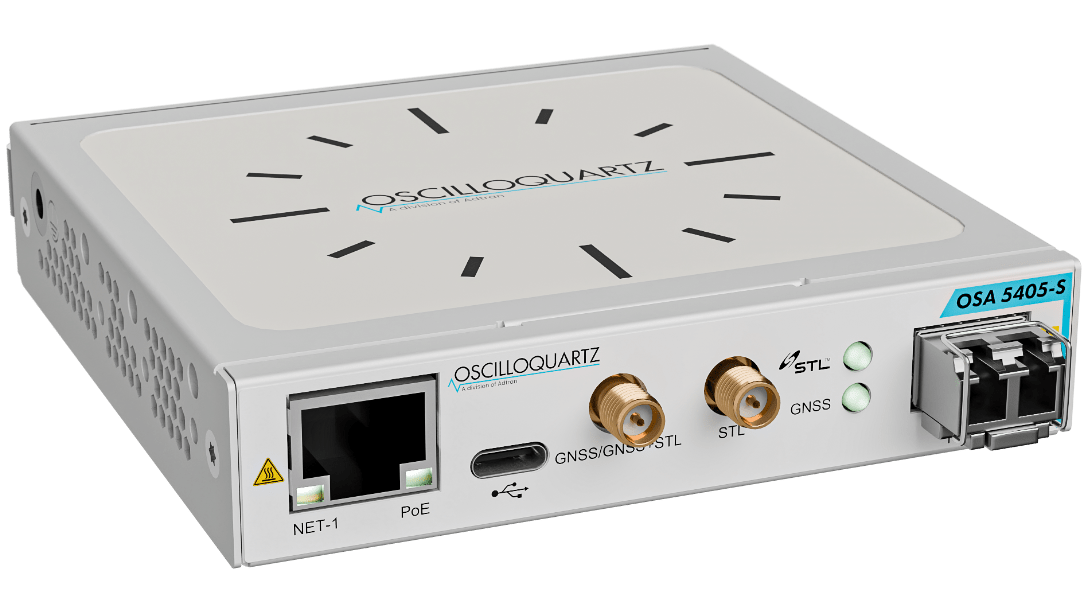Sunny Long Beach in California was once again the setting for the Precise Time and Time Interval (PTTI) conference. Organized by the Institute of Navigation (ION), the annual meeting gathers engineers, technicians, companies and managers to discuss all things timing and synchronization.
As always, the Oscilloquartz team was there, and this year we had something a special up our sleeve, or rather in our pocket: our OSA 5405-S dual GNSS/LEO grandmaster clock, a hockey puck-sized solution that provides incredibly precise and robust satellite timing – even indoors.
Though we weren’t doing an official demo, the OSA 5405-S nevertheless ended up taking the conference by storm. And why wouldn’t it? Developed with our partner, Satelles, it’s the first grandmaster on the market capable of leveraging Satellite Time and Location (STL) data from low Earth orbit (LEO) satellites.
We walked the device around the conference floor for the entire afternoon, and it never once skipped a beat, remaining locked to Satelles’ LEO satellites, faithfully delivering timing signals. Even our competitors had to admit they were impressed!
GNSS vs LEO
But what’s the value of STL? Isn’t the Global Navigation Satellite System (GNSS) the gold standard when it comes to satellite timing traceable to coordinated universal time (UTC)? Well, not really. Though GNSS is commonly used as a cost-free source of highly accurate timing, it has an Achilles heel: signals are weak and also highly vulnerable to attack. Consider the fact that anyone can get hold of cheap, off-the-shelf components to jam or spoof GNSS signals — not exactly reassuring.
What’s more, because you also need a clear line of sight to receive GNSS signals, if you want to keep your receiver indoors, you must deploy an outdoor antenna and run cables into your building. Our OSA 5405-S with its 5400 STL module, however, is much easier to deploy because it leverages LEO satellites — part of the Iridium constellation of satellites — to receive STL data. LEO signals are around 1,000 times stronger than those generated by GNSS, so they perform well in most indoor environments without the need for roof-mounted antennas. The unit needs just one small antenna to provide Stratum-class timing and doesn’t just act as a grandmaster clock, it can also serve as a boundary clock and an edge client clock. And don’t forget that the OSA 5405-S is still a GNSS receiver.

